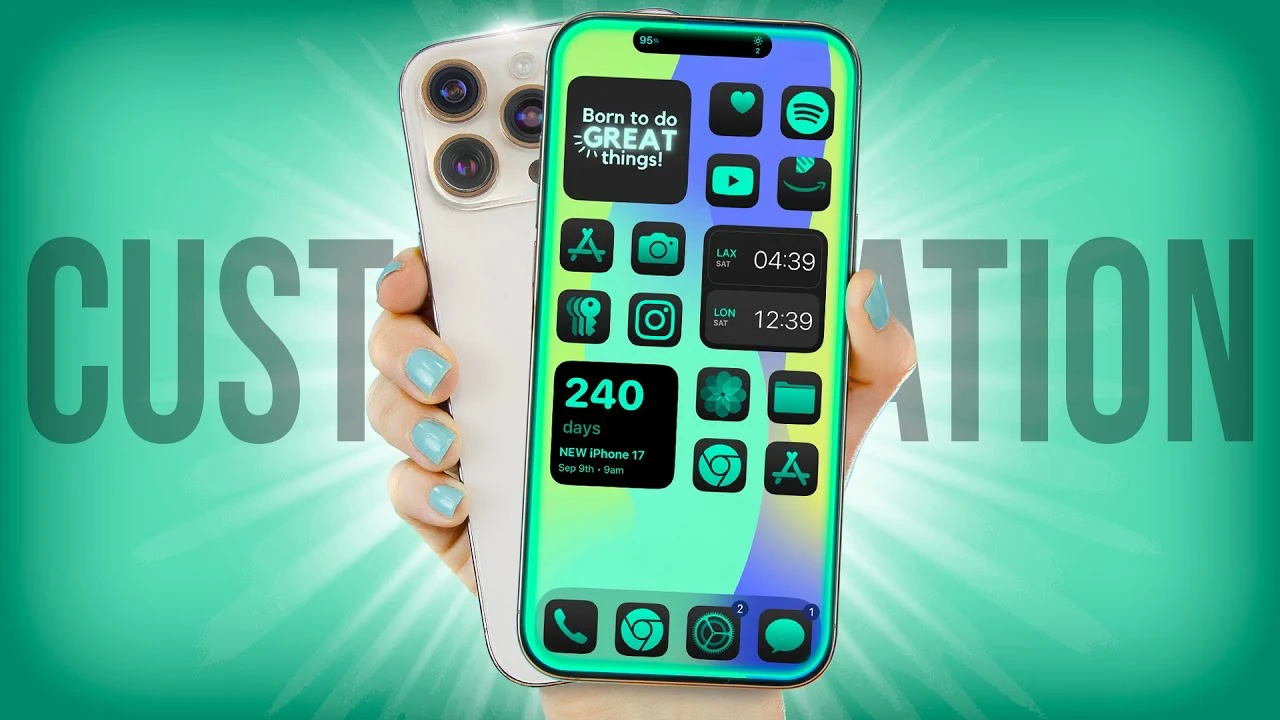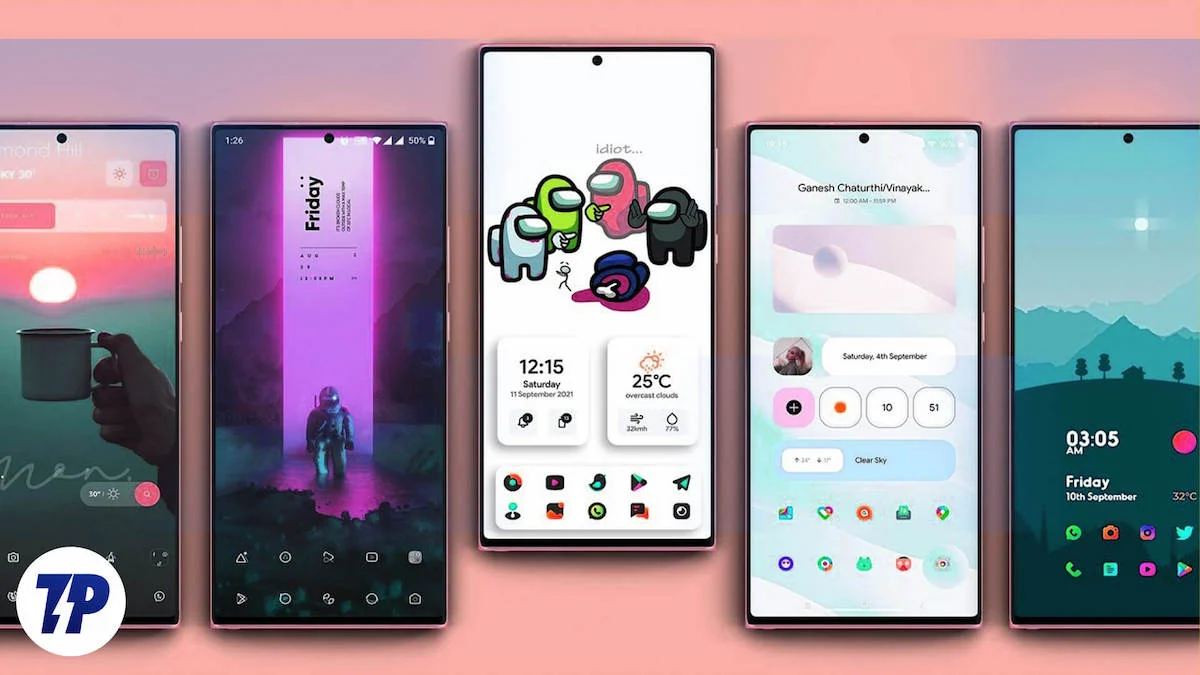Your smartphone is more than just a communication device—it’s a personal statement, a productivity tool, and a reflection of your style. With the latest customization options available in 2025, you can transform your device into something uniquely yours. Whether you’re using Android or iOS, here’s your comprehensive guide to mastering phone customization like a pro.
Understanding the Customization Landscape in 2025

The mobile customization scene has evolved dramatically over the past few years. iOS has opened up significantly with interactive widgets and deeper personalization options, while Android continues to lead with its open ecosystem and limitless modification possibilities. Both platforms now offer sophisticated theming engines, AI-powered customization suggestions, and seamless integration with third-party apps.
Mastering Themes: Your Visual Identity

iPhone Theme Customization
Apple’s iOS has embraced customization through the Shortcuts app and focus modes. Create cohesive themes by coordinating your wallpaper, widget colors, and app icons – for gaming-inspired designs, check out creative ideas at danny dollar slot. Use the Shortcuts app to create custom app icons that match your aesthetic—whether that’s minimalist monochrome, vibrant gradients, or nostalgic retro designs.
The key to professional-looking iPhone themes is consistency. Choose a color palette of 2-3 complementary colors and stick to it across all elements. Consider using apps like Widgetsmith or Color Widgets to create custom widgets that perfectly match your chosen aesthetic.
Android Theme Mastery
Android users have access to powerful launchers like Nova Launcher, Action Launcher, and Lawnchair that completely transform the interface. These launchers allow you to adjust everything from icon sizes and grid layouts to transition animations and gesture controls.
For the ultimate customization experience, explore icon packs from developers like Vertumus, Linebit, or Candycons. These professionally designed icon sets ensure visual consistency across all your apps. Many launchers also support dynamic theming that automatically adjusts colors based on your wallpaper.
Cross-Platform Theme Resources
Discover high-quality themes and wallpapers through communities like r/iOSthemes, r/androidthemes, and specialized apps like Zedge or Backdrops. These platforms offer curated collections and user-generated content that can inspire your next customization project.
Crafting the Perfect Audio Experience

Custom Ringtones and Notifications
Move beyond default ringtones by creating personalized audio experiences. Use apps like GarageBand on iOS or Audacity on desktop to create custom ringtones from your favorite songs, movie quotes, or original recordings. Keep ringtones between 20-40 seconds for optimal impact.
For notification sounds, consider subtle, pleasant tones that won’t disrupt your environment. Many professionals opt for natural sounds like gentle chimes or soft percussion that provide clear alerts without being jarring.
Advanced Audio Customization
Explore spatial audio and haptic feedback options to create immersive experiences. Both iOS and Android now support sophisticated vibration patterns that can be customized for different contacts and app notifications. This tactile customization adds another layer of personalization to your device.
Widget Wizardry: Functional Beauty
iOS Widget Strategies
iOS widgets have become incredibly powerful, offering real-time information at a glance. Create widget stacks that automatically rotate based on time of day or your activity patterns. Use apps like Scriptable to create custom widgets with personalized data displays, weather information, or productivity metrics.
Professional tip: Group related widgets together and use consistent sizing to create clean, organized home screens. Consider dedicating specific pages to different aspects of your life—work, health, entertainment, and productivity.
Android Widget Excellence
Android’s widget system remains the gold standard for customization. Widgets like KWGT (Kustom Widget Maker) allow you to create completely custom designs with live data feeds. Build widgets that display your calendar, weather, system information, and app shortcuts in visually stunning formats.
For power users, tasker integration can create dynamic widgets that change based on your location, time of day, or phone usage patterns. This level of automation transforms your phone into a truly intelligent assistant.
Advanced Customization Techniques
System-Level Modifications
For Android users comfortable with deeper customization, explore options like custom ROMs, Xposed modules, or Magisk modifications. These require technical knowledge but offer unprecedented control over your device’s appearance and functionality.
iOS users can explore jailbreaking options, though this requires careful consideration of security implications and warranty concerns. Focus on safer alternatives like Shortcuts automation and Focus mode customization for extensive personalization without system modifications.
Automation and Smart Customization
Both platforms now offer powerful automation tools. iOS Shortcuts can automatically change your theme, adjust settings, and modify your interface based on triggers like time, location, or activity. Android’s Tasker provides even more granular control, allowing you to create complex automation sequences that respond to virtually any system condition.
Organization and Productivity Enhancement
App Organization Strategies
Move beyond traditional folder structures by organizing apps based on usage patterns rather than categories. Use widget replacements for frequently accessed apps and hide rarely used applications in search-accessible locations.
Create themed app pages that reflect different aspects of your life—work mode, fitness tracking, entertainment, and social connectivity. This approach reduces cognitive load and improves efficiency.
Minimalist Approaches
Consider adopting minimalist customization philosophies that prioritize function over form. Clean interfaces with thoughtful use of negative space, limited color palettes, and strategic widget placement can create more focused, less distracting user experiences.
Privacy and Security Considerations
When customizing your phone, maintain awareness of privacy implications. Third-party launchers and customization apps often require extensive permissions. Research developers, read privacy policies, and consider using open-source alternatives when possible.
Avoid customization methods that require disabling security features or installing applications from unknown sources unless you fully understand the risks involved.
Staying Current with Trends
The customization landscape evolves rapidly. Follow design communities, technology blogs, and platform-specific forums to stay informed about new tools, techniques, and aesthetic trends. Participate in customization challenges and share your creations to connect with like-minded enthusiasts.
Conclusion
Phone customization in 2025 offers unprecedented opportunities for personal expression and functional optimization. Whether you prefer subtle modifications or dramatic transformations, the key is finding approaches that genuinely improve your daily interaction with your device.
Start with small changes—a new wallpaper, a custom widget, or a different ringtone—and gradually build your skills and confidence. Remember that the best customization serves both form and function, creating a device that looks great and works perfectly for your unique needs and preferences.
Your phone should feel like an extension of yourself. With these tools and techniques, you can create a personalized digital experience that reflects your style, supports your productivity, and brings a little joy to your daily routine.



